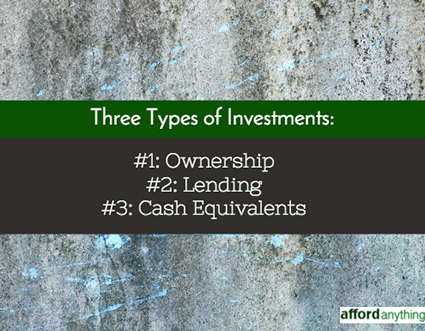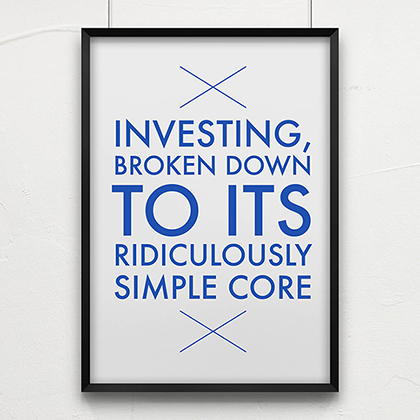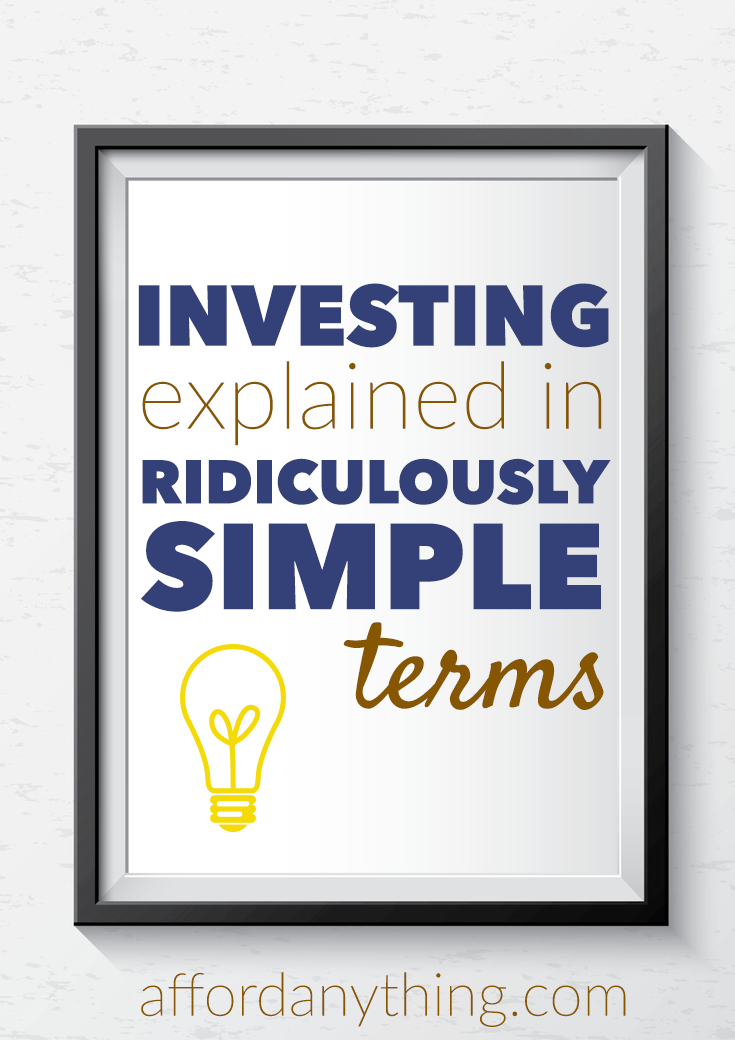
Myth: Wealth comes from living below your means.
Fact: Frugality is the first step, not the last.
I’d like to tell you about one of the most interesting couples I know.
They were apartment-dwellers when we met, and I don’t mean the New York City variety. Their dark, musty apartment festered in an area where land is plentiful and square footage is cheap, where apartments are synonymous with squalor.
I’m not sure when their tables turned, or how long they toiled behind-the-scenes building their family empire; I can’t pinpoint the year their net worth climbed into seven digits.
Their newfound wealth isn’t flashy. They drive modest cars and wear nameless brands, though they’ve upgraded into a nicer home.
The main hint that they’re moneyed, though, isn’t reflected in their purchases. It shows in how they spend their time.
Neither have jobs outside the home (anymore), nor do they have any sense of urgency about getting one. They travel regularly, ski often, kayak on occasion, and hike like it’s going out of style.
Occasionally I’ll spend a weekend with them. When we’re together at the grocery store, I see them scanning their receipt carefully, checking for errors: Did the milk ring up twice?
For a moment, I’m tempted to believe that their wealth came from penny-pinching.
“See?,” I tell myself, because I want to believe it. “They’re frugal; they pay attention to sales and check receipts. And they’re millionaires. I bet that’s how they did it.”
Then I slap myself.
“College students and low-wage workers check their grocery receipts for accuracy,” I remind myself, “and they’re not millionaires.”
“Yet.”
Here’s a lesson I wasted years figuring out —
Paying attention to sales, scrutinizing receipts, negotiating bills — these are symptoms of attentiveness to money. But they’re not the cause of wealth.
You don’t grow wealth by clipping coupons and turning down the thermostat; you grow wealth by starting businesses and investing.
Frugality is the first step, not the last.
Why Investing Doesn’t Get Enough Credit
Most personal finance advice emphasizes saving, saving, saving — often to the exclusion of the limitless potential found in earning more.
Earning more (while maintaining current spending) is the most effective way to build your net worth. It’s also the most overlooked.
I have a few theories why:

#1: Low-Hanging Fruit: Chopping a $35 monthly cable TV bill is easier than starting a side business or buying a rental property that brings in an extra $800 per month.
If you’re new to the personal finance scene or if you’re prone to overspending, frugality provides the “quick win,” the low-hanging fruit.
#2: Simplicity: Avoiding packaged foods and dining at home on Friday night is easy to understand; these articles require minimal research.
Understanding how a mortgage amortization schedule works, knowing the difference between an appraisal and an assessment — these topics are complex, and therefore less discussed on the distracted Internet.
#3: Accessibility: You need confidence to believe you can launch a business, quit your job, and travel to Italy with a one-way ticket. You don’t need (as much) confidence to believe you can shop at T.J. Maxx instead of Banana Republic. Frugality feels accessible. There’s less risk of rejection; less fear of failure.
#4: Instant Gratification: Buying a sweater on clearance, scoring a great deal on shoes — these cost-cutting measures provide us with instant gratification. “Sweet! I saved $12 on groceries!”
Buying your first rental property takes months. It’s no surprise that people are drawn to instant results — even if these doesn’t move the needle as much.
The take-away, however, is not to abandon frugality altogether. It’s to recognize frugality as a stepping stone that creates the initial seed money for your businesses and investments. Those businesses and investments create sustainable, freedom-inducing wealth.
Three Types of Investments
There are three types of investments:
- Owner — Stocks, businesses, real estate. You’re the owner. You profit from performance.
- Lender — Bonds, peer-to-peer lending, owner-financing. You’re the lender. You profit from spread.
- Holder — CDs, money market accounts, savings accounts. You don’t profit. You hope to break even with inflation, but you probably won’t.

We’ll focus this article on investments in which you’re the owner.
Here are four strategies for investing in assets you own:
#1: Three-Fund Portfolio
First, a short vocabulary lesson:
- Broad market is a fancy way of saying “gigantic market” — like the entire U.S., or every big company in Europe.
- Index funds are baskets of stocks that mirror an underlying trading index, like the Dow Jones.
Broad-market index funds, represent a huge cross-section of the market.
Okay, a few more definitions. Equities (stock) markets are classified in three ways:
- Size: Large, mid-size and small companies.
- Style: Value, growth, and blend.
- Geography: As Americans, we divide the world into U.S. and International. We break down international as:
- Developed markets like Western and Northern Europe, Australia, New Zealand, Canada, and some parts of Asia (Japan, Hong Kong, Singapore),
- Emerging markets like Brazil, Russia, China, India, South Africa, Thailand and the U.A.E.
- Frontier markets like Ghana, Serbia, Croatia, Jamaica, Ukraine and Botswana
This elaborate setup leads to the following idea:
Invest 1/3 of your portfolio in each of three broad markets:
- U.S. stocks
- U.S. bonds
- International stocks
Keep a one-third proportion in each.
Funds will rise and fall over time, which means you won’t hold one-third forever. Rebalance annually to return to one-third.
Repeat until you’re 55-60, then switch to a 50/50 split between U.S. stocks and bonds. (I’m aiming this specifically at U.S.-based readers.)

“Is this the most-optimized portfolio?”
No, it’s the easiest. Done is better than perfect.
Extra Credit:
If you want something that’s slightly more sophisticated, try this: 110 Minus Your Age = the proportion in stocks, with the rest in bonds.
Of the proportion that goes into stocks, 70% goes to the U.S. and 30% goes to International funds.
If you’re 30, for example:
- 80 percent stocks (56% U.S. stocks, 24% International stocks)
- 20 percent bonds
If you enjoy a bit more risk, modify the equation to 120 minus Your Age; if you lean conservative, modify it to 100 minus Your Age.
#2: Five-Fund Portfolio
Here’s a modified version of the strategy above. It uses five types of index funds:
- 20% U.S. large caps
- 20% U.S. small caps
- 20% International emerging markets
- 20% International developed markets
- 20% U.S. bonds
If you like to place tiny bets on the market, try a modified version that lets you stick 10 percent of your portfolio into another alternative.
- 10% Random wild fun investing
- 18% U.S. large caps
- 18% U.S. small caps
- 18% International emerging markets
- 18% International developed markets
- 18% U.S. bonds
Use Personal Capital to track your investments When you login, you’ll see your allocation at a glance:
![]()
You can also use this to track your net worth. (It’s free, although that’s an affiliate link.)
#3: Real Estate
Don’t spread yourself too thin. If you want to become a real estate investor, choose one niche and one strategy.
- Niches: Residential; Retail; Apartments; Office; Notes; REITs; etc.
- Strategy: Rentals; Flipping; Wholesaling; etc.
Start with the end in mind. My goal is passive income, so I prefer rental properties thanks to their cash flow.
My strategy is straightforward: buy, rehab, put my property manager in charge, and collect payments. Dump the profits into massacring the mortgage and/or buying more houses in cash.
#4: Launch a Business
Many entrepreneurs don’t think of themselves as investors. But having your own business is the ultimate investment, for reasons that are obvious if you think about it.
There are two types of businesses:
- Lifestyle — Your goal is a lifestyle that creates freedom and flexibility. You’re happy as an independent solo-preneur. If you hire employees/contractors, you’ll limit your growth to a tiny team. You don’t want scale; you want lifestyle.
- Growth Businesses — You’re building a company that could be an acquisition target or that you can take public. You harbor huge ideas: you want to expand to 40 employees by December. You want to scale up, then cash out (or keep scaling.)
So … What Should You Choose?
What does this mean in your life?
Here’s my challenge to you:
#1: Pick one method that we’ve discussed. Rebalance your portfolio. Buy a broad-market index fund. Choose a real estate niche.
#2: Write the smallest step required to get started. Start a website for your lifestyle business. Learn more about rental properties.
#3: Create a deadline for that small step. Two days? Five days?
#4: Start.
